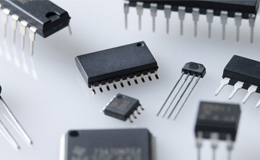In recent years, the health and environmental hazards caused by hazardous substances in electronic and electrical products have received widespread attention. In order to restrict the use of certain hazardous substances, the EU took the lead in promulgating and implementing the RoHS directive, followed by the United States, China, Japan, and South Korea. The RoHS directive has also been promulgated one after another, and the relevant environmental protection regulations have become increasingly strict and improved, which has brought huge challenges to manufacturers and distributors of electronic and electrical products.
EU RoHS
1. On July 1, 2006, the EU ROHS Directive 2002/95/EC was formally implemented, and the use of six toxic and hazardous substances in electronic and electrical products in the markets of the member states of the Union was restricted;
2. On July 1, 2011, the European Union issued the RoHS Amendment Directive 2011/65/EU (commonly known as RoHS2.0) in its official gazette, which will take effect on the 20th day after its issuance.
3. On June 4, 2015, the European Union issued the RoHS2.0 Amendment Directive (EU) 2015/863, which officially included DEHP, DBP, BBP, and DIBP in the list of restricted substances in Appendix II. Up to now, Appendix II has ten compulsory controlled substances. .
China RoHS
Officially came into effect on March 1, 2007, China RoHS certification is also known as China RoHS certification;
China RoHS certification was enforced on July 1, 2016;
The control of the six toxic and hazardous substances in electronic information products adopts the method of catalog management, and progressively promotes the prohibition or restriction of their use.
U.S. RoHS
It was proposed on May 14, 2009 to implement federal unified control regulations on certain hazardous substances used in electrical equipment;
It is required that electrical and electronic products manufactured after July 1, 2010 must not contain six toxic and hazardous substances.
NBTS laboratories provide hazardous substance content testing services in accordance with national regulations and standards, which can help you formulate hazardous substance control plans and help your products meet the requirements of relevant laws and regulations, so as to successfully enter the market.
| Substance name | Limit(mg/kg) | testing method | test instrument | Regulations, directives |
| (Pb) | 1000 | IEC62321 GB/T26125-2011 |
ICP-OES | 2011/65/EU 2015/863/EU GB/T26572-2011 |
| (Cd) | 100 | |||
| (Hg) | 1000 | |||
| (Cr6+) | 1000 | UV-vis | ||
| (PBB) | 1000 | GC-MS | ||
| (PBDE) | 1000 | |||
| DEHP | 1000 | EN14372-2004 | GC-MS | 2015/863/EU |
| BBP | 1000 | |||
| DBP | 1000 | |||
| DIBP | 1000 |
Process of handling ROHS report:
The first step: apply
1. Fill in the application form
2. Apply for company information form
3. Provide product information and send samples
Step 2: Quotation
According to the information provided by the engineer, determine the test standard, test time and corresponding cost;
Step 3: Payment
After the applicant confirms the quotation, sign the application form and service agreement and make payment
Step 4: Test
The laboratory conducts a full set of tests on the applied products according to the relevant EU testing standards
Step 5: The test is passed and the report is complete
Step 6: The project is completed, and the ROHS inspection report is issued

 Hello, welcome to visit the official website of Nengbiao Testing!
Hello, welcome to visit the official website of Nengbiao Testing! Website map
Website map Contact
Contact ENGLISH
ENGLISH









